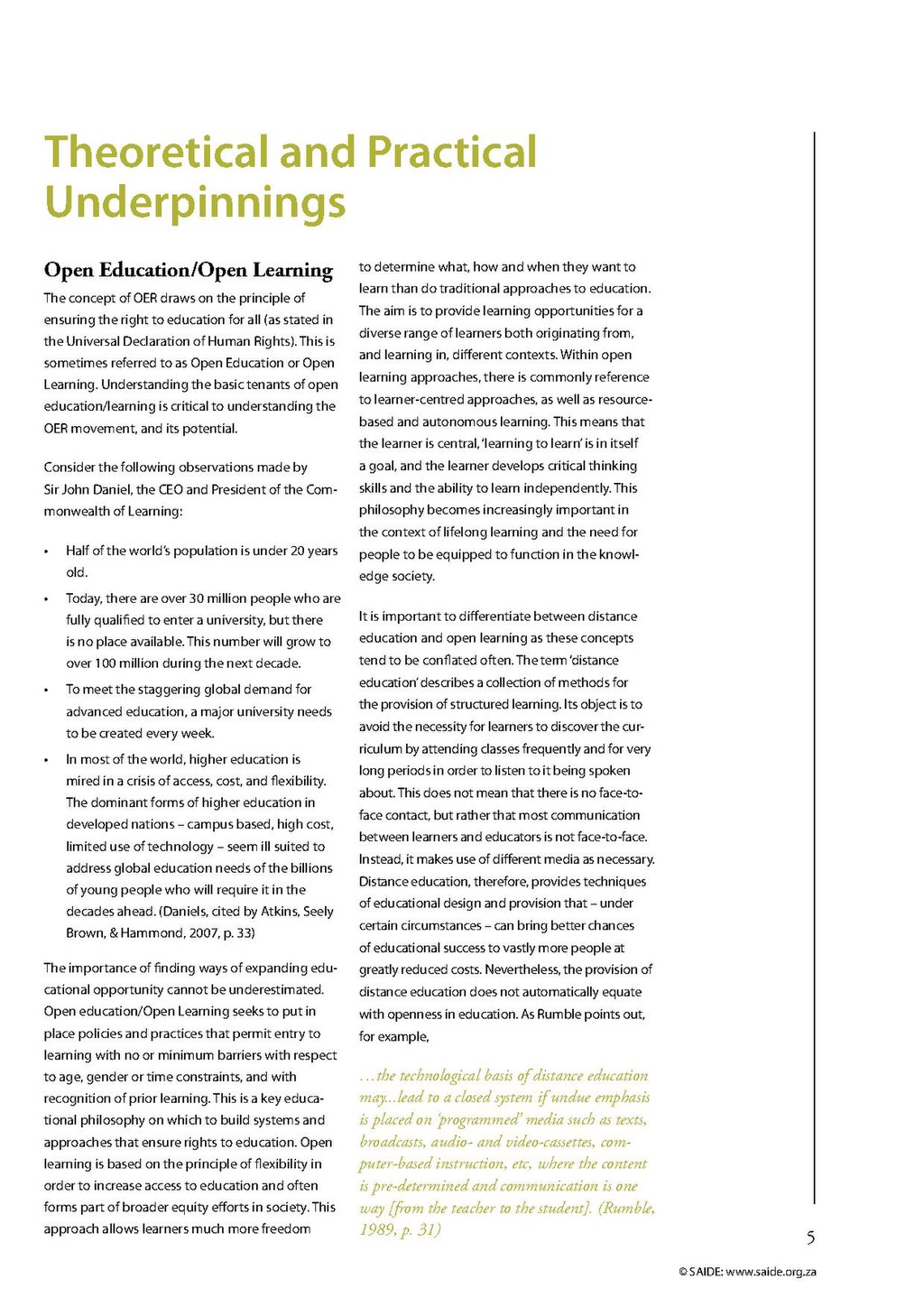Theoretical and Practical Underpinnings
Open Education/Open Learning
The concept of OER draws on the principle of ensuring the right to education for all (as stated in the Universal Declaration of Human Rights). This is sometimes referred to as Open Education or Open Learning. Understanding the basic tenants of open education/learning is critical to understanding the OER movement, and its potential.
Consider the following observations made by Sir John Daniel, the CEO and President of the Commonwealth of Learning:
- Half of the world's population is under 20 years old.
- Today, there are over 30 million people who are fully qualified to enter a university, but there is no place available. This number will grow to over 100 million during the next decade.
- To meet the staggering global demand for advanced education, a major university needs to be created every week.
- In most of the world, higher education is mired in a crisis of access, cost, and flexibility. The dominant forms of higher education in developed nations – campus based, high cost, limited use of technology – seem ill suited to address global education needs of the billions of young people who will require it in the decades ahead. (Daniels, cited by Atkins, Seely Brown, & Hammond, 2007, p. 33)
The importance of finding ways of expanding educational opportunity cannot be underestimated. Open education/Open Learning seeks to put in place policies and practices that permit entry to learning with no or minimum barriers with respect to age, gender or time constraints, and with recognition of prior learning. This is a key educational philosophy on which to build systems and approaches that ensure rights to education. Open learning is based on the principle of flexibility in order to increase access to education and often forms part of broader equity efforts in society. This approach allows learners much more freedom to determine what, how and when they want to learn than do traditional approaches to education. The aim is to provide learning opportunities for a diverse range of learners both originating from, and learning in, different contexts. Within open learning approaches, there is commonly reference to learner-centred approaches, as well as resource-based and autonomous learning. This means that the learner is central, 'learning to learn' is in itself a goal, and the learner develops critical thinking skills and the ability to learn independently. This philosophy becomes increasingly important in the context of lifelong learning and the need for people to be equipped to function in the knowledge society.
It is important to differentiate between distance education and open learning as these concepts tend to be conflated often. The term 'distance education' describes a collection of methods for the provision of structured learning. Its object is to avoid the necessity for learners to discover the curriculum by attending classes frequently and for very long periods in order to listen to it being spoken about. This does not mean that there is no face-to-face contact, but rather that most communication between learners and educators is not face-to-face. Instead, it makes use of different media as necessary. Distance education, therefore, provides techniques of educational design and provision that – under certain circumstances – can bring better chances of educational success to vastly more people at greatly reduced costs. Nevertheless, the provision of distance education does not automatically equate with openness in education. As Rumble points out, for example,
…the technological basis of distance education may...lead to a closed system if undue emphasis is placed on 'programmed' media such as texts, broadcasts, audio- and video-cassettes, computer-based instruction, etc, where the content is pre-determined and communication is one way [from the teacher to the student]. (Rumble, 1989, p. 31)
© SAIDE: www.saide.org.za
